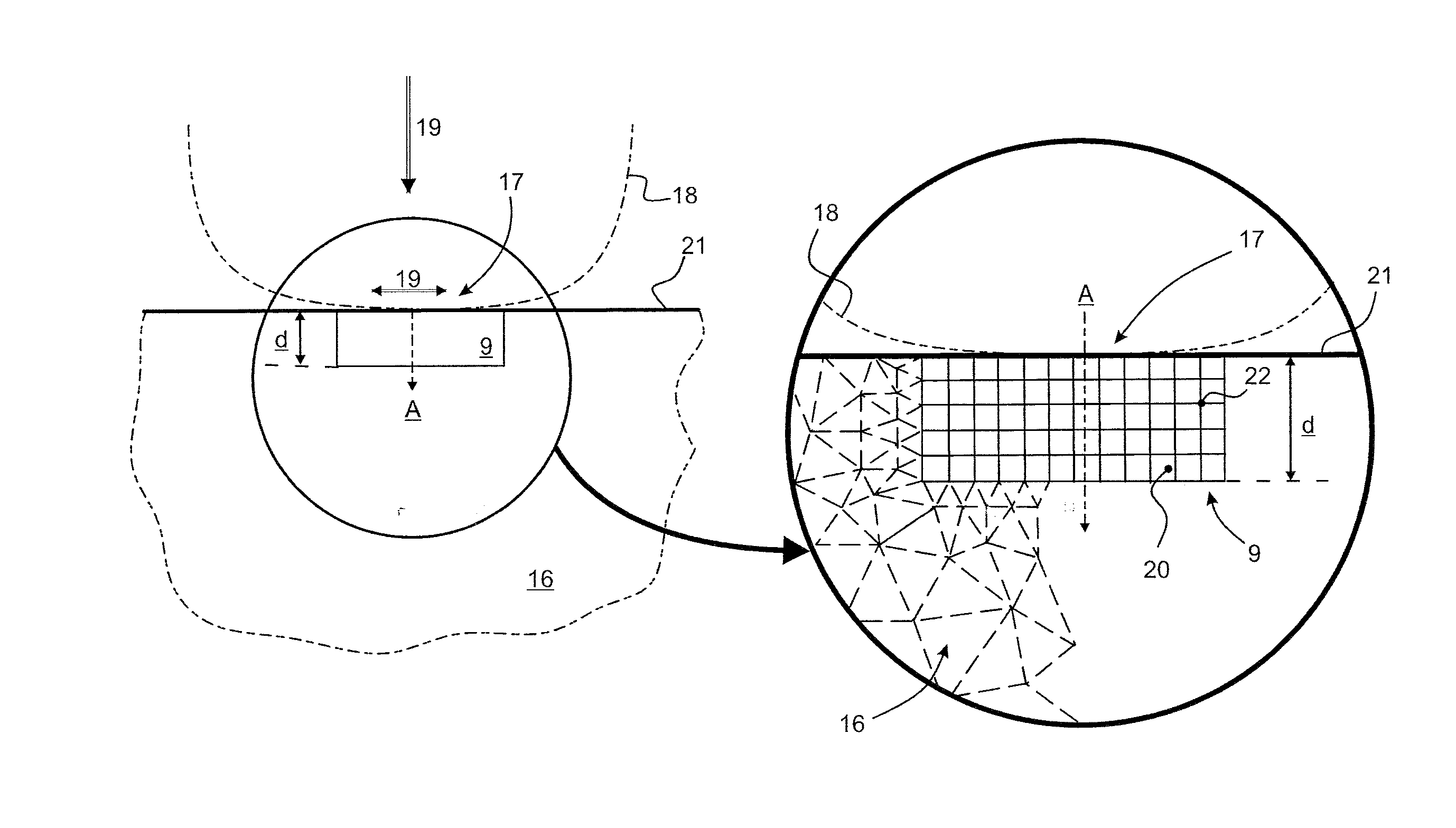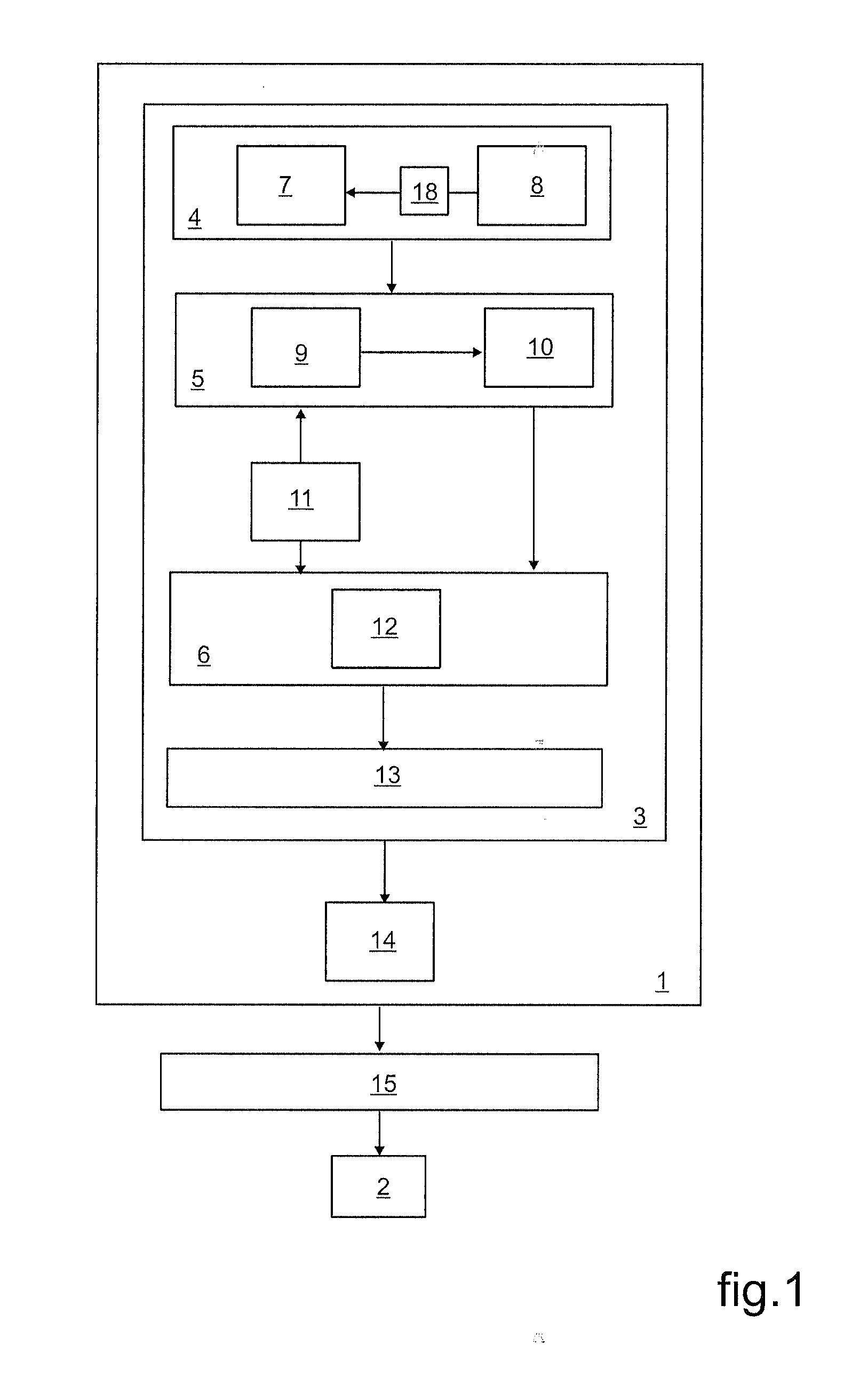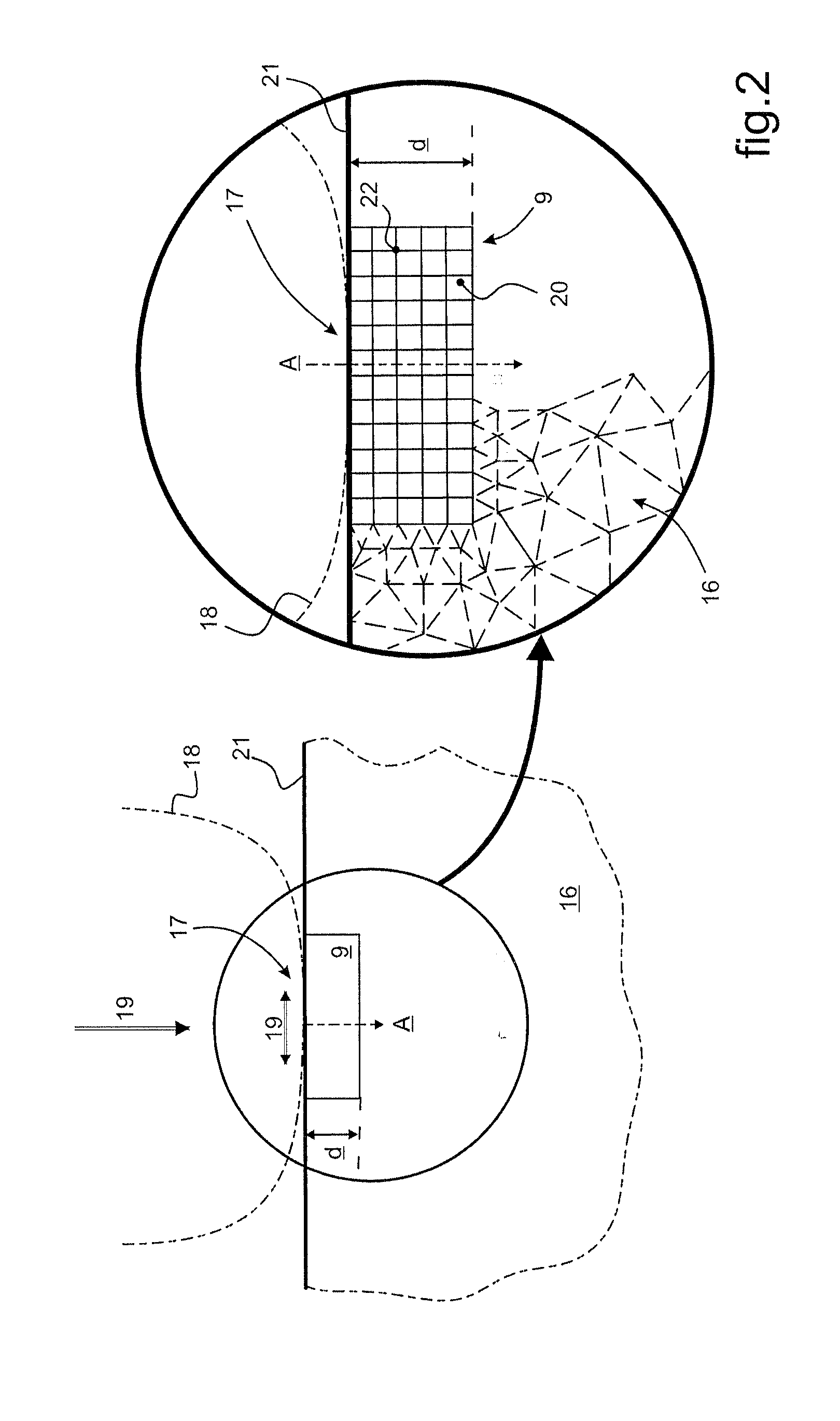Method of fabricating a mechanical part, including a method of predicting the risks of crack initiation in the part in a "fretting-fatigue" situation
- Summary
- Abstract
- Description
- Claims
- Application Information
AI Technical Summary
Benefits of technology
Problems solved by technology
Method used
Image
Examples
Embodiment Construction
[0068]In FIG. 1, a method of fabricating a mechanical part includes an operation 1 of designing the part 2 that is to be fabricated. The design operation 1 serves to define the structure of the part 2 that is to be fabricated, by taking account of the stresses to which the part 2 that is to be fabricated will be subjected when in operation. The design operation 1 seeks to specify shapes and dimensions for the part 2 that is to be fabricated in compliance with a given material selected for making it. It should be considered that the fabrication method may implement other operations that do not form part of the techniques that are used in the context of the present invention and that are specifically dedicated to predicting the risks of cracking beginning in the part 2 that is to be fabricated.
[0069]The design operation 1 includes a predictive search 3 for the initiation of cracking in the part 2 that is to be fabricated, the search essentially involving a test operation 4 performed o...
PUM
| Property | Measurement | Unit |
|---|---|---|
| Length | aaaaa | aaaaa |
| Length | aaaaa | aaaaa |
| Distance | aaaaa | aaaaa |
Abstract
Description
Claims
Application Information
 Login to View More
Login to View More - R&D
- Intellectual Property
- Life Sciences
- Materials
- Tech Scout
- Unparalleled Data Quality
- Higher Quality Content
- 60% Fewer Hallucinations
Browse by: Latest US Patents, China's latest patents, Technical Efficacy Thesaurus, Application Domain, Technology Topic, Popular Technical Reports.
© 2025 PatSnap. All rights reserved.Legal|Privacy policy|Modern Slavery Act Transparency Statement|Sitemap|About US| Contact US: help@patsnap.com



